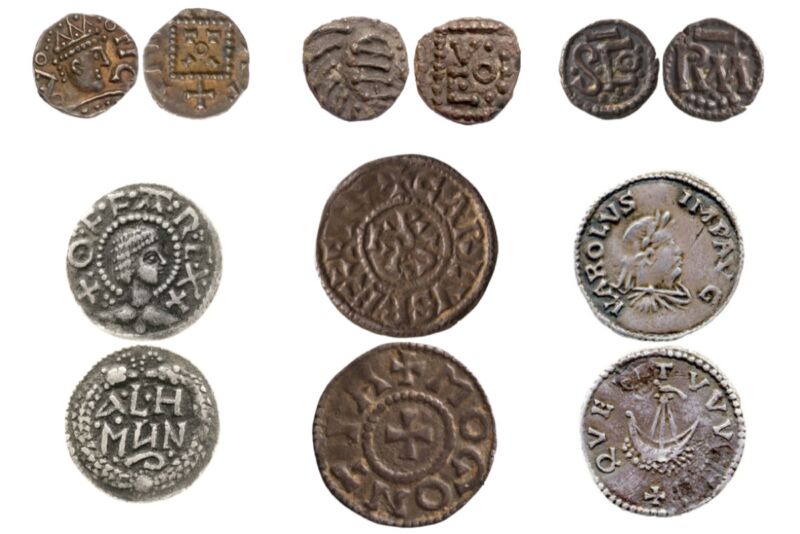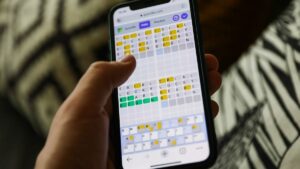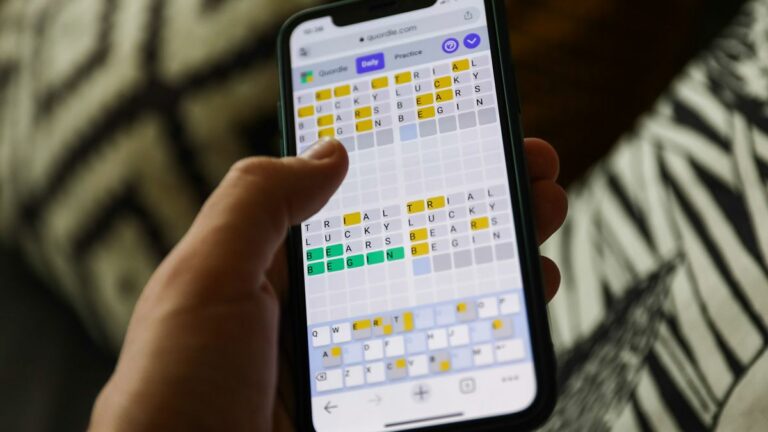
The Fitzwilliam Museum, University of Cambridge
Sometime around 660 CE, silver coinage replaced gold as the dominant form of currency in northwest Europe. But what was the source of all that silver? According to a recent paper published in the journal Antiquity, silver for the earlier post-Roman coins during this period came from Byzantine silver plate, while silver for the later coins most likely came from mines located in Melle, Aquitaine.
“This was such an exciting discovery,” said co-author Rory Naismith, a medieval historian at the University of Cambridge. “I proposed Byzantine origins a decade ago but couldn’t prove it. Now we have the first archaeometric confirmation that Byzantine silver was the dominant source behind the great seventh-century surge in minting and trade around the North Sea.”
There are a number of high-tech tools that can be used to learn more about historic currencies. For instance, Michael Wiescher, a nuclear physicist at the University of Notre Dame, has combined XRF scaling with PIXE mapping of Roman denarii to test the currency’s quality and learn more about the production techniques. Working with his undergraduate students, he has also used electron spectroscopy to measure the silver content of each coin and learn about how the impurities were distributed.
The Roman silver denarius was the backbone currency of the Roman Empire between 200 BCE and 300 CE. During Nero’s reign, the coins were required to be 92.5 percent silver to protect the currency against inflation and devaluation. But the analysis of coins from 250 to 350 CE showed declining percentages of silver because the Roman mints gradually debased the denarius to increase their profits. By 295 CE, the silver content was just about 5 percent. Wiescher’s analysis revealed that most of the coins are composed of silver and copper and that sulfur and iron impurities led to corrosion in some of them.
The same trick of replacing some of the silver in coins with copper showed up again thousands of years later in Spain’s Latin American colonies. Wiescher analyzed 91 silver rials dated between the 16th and 18th centuries, from Mexico and Potosi, Bolivia.
Between 1645 and 1648, the silver content dropped from 92.5 percent sterling to just 70–80 percent; the rest was a copper admixture. When this was discovered in the 17th century, the silver market in Spain crashed and the coins were devalued, with devastating effects on the colonial Spanish economy. Some of that silver from Spain and Mexico eventually made its way to the early American colonies. The Boston Mint used Spanish silver between 1653 and 1686 for minting coins, once again adding a little copper or iron to increase their profits.
In 2022, scientists used a variety of physics-based methods—classic light microscopy, ultraviolet imaging, scanning electron microscopy, and reflection mode Fourier-transform infrared spectroscopy—to analyze a cache of Roman coins that was discovered in Transylvania in 1713. Several bore the portrait a Roman emperor named Sponsian and hence were thought to be forgeries, since there are no historical records of a Roman emperor with that name.
The 2022 analysis suggested the coins were probably genuine, speculating that Sponsian may have been an obscure Roman military commander in the Roman province of Dacia, an isolated gold mining outpost that overlaps with modern-day Romania. Given their mining resources, Dacia could have minted their own coins with Sponsian’s image, which would have helped cement his authority and maintain economic stability and social order until the area was finally evacuated between 271 and 275 CE.




















+ There are no comments
Add yours